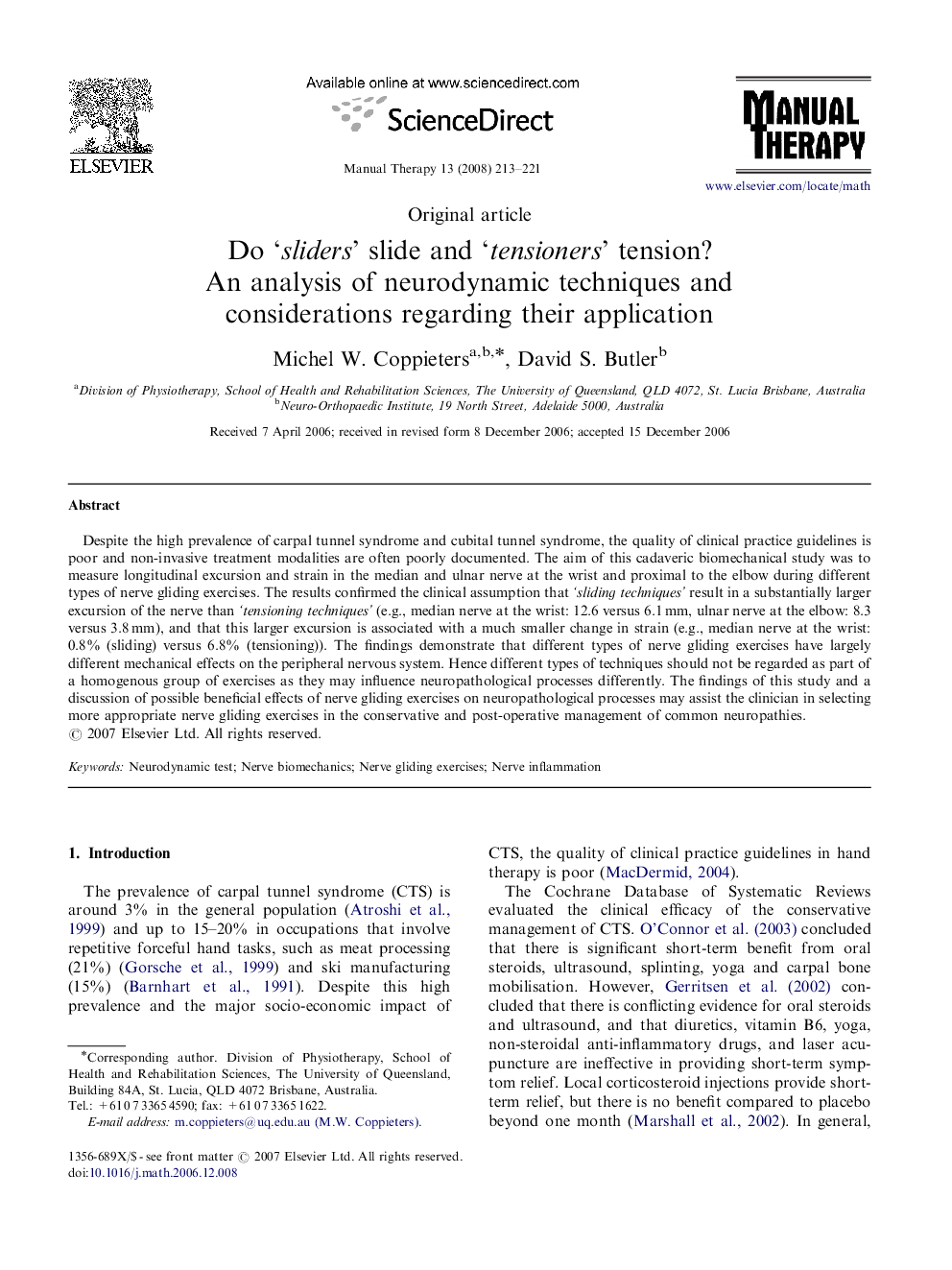| Article ID | Journal | Published Year | Pages | File Type |
|---|---|---|---|---|
| 2625725 | Manual Therapy | 2008 | 9 Pages |
Despite the high prevalence of carpal tunnel syndrome and cubital tunnel syndrome, the quality of clinical practice guidelines is poor and non-invasive treatment modalities are often poorly documented. The aim of this cadaveric biomechanical study was to measure longitudinal excursion and strain in the median and ulnar nerve at the wrist and proximal to the elbow during different types of nerve gliding exercises. The results confirmed the clinical assumption that ‘sliding techniques’ result in a substantially larger excursion of the nerve than ‘tensioning techniques’ (e.g., median nerve at the wrist: 12.6 versus 6.1 mm, ulnar nerve at the elbow: 8.3 versus 3.8 mm), and that this larger excursion is associated with a much smaller change in strain (e.g., median nerve at the wrist: 0.8% (sliding) versus 6.8% (tensioning)). The findings demonstrate that different types of nerve gliding exercises have largely different mechanical effects on the peripheral nervous system. Hence different types of techniques should not be regarded as part of a homogenous group of exercises as they may influence neuropathological processes differently. The findings of this study and a discussion of possible beneficial effects of nerve gliding exercises on neuropathological processes may assist the clinician in selecting more appropriate nerve gliding exercises in the conservative and post-operative management of common neuropathies.
